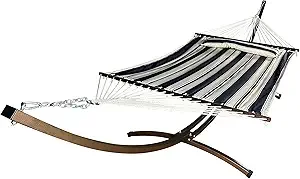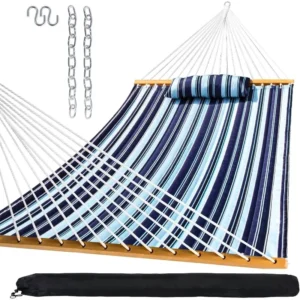1. Introduction: Why Hammock Placement Matters for Your Relaxation Experience
There’s something magical about the gentle sway of a hammock that can transport you to a state of deep relaxation unlike any other resting place. Hammocks offer not just a place to sit or lie down, but a complete sensory experience that connects you more intimately with your surroundings, whether in your backyard or deep in the wilderness. This unique combination of comfort, movement, and connection to nature is why hammocks have endured as a beloved relaxation method across cultures for centuries.
But here’s the truth many hammock enthusiasts discover too late: where and how you hang your hammock dramatically impacts your entire experience. The perfect spot doesn’t just enhance your comfort—it ensures your safety, protects your hammock investment, and demonstrates respect for the environment around you. Poor placement can lead to an uncomfortable rest at best, and dangerous situations or environmental damage at worst.
In this comprehensive guide, we’ll explore everything you need to know about finding and creating the ideal hammock spot. From safety fundamentals to technical setup details, location selection to solving common placement challenges, we’ll cover all aspects of indoor vs outdoor placement considerations to help you achieve hammock nirvana.
Science backs up what hammock lovers have known intuitively: the gentle rocking motion can help you fall asleep faster and enjoy deeper sleep cycles. Studies have even shown potential benefits for stress reduction and memory consolidation. But these benefits can only be fully realized when your hammock is properly placed and set up.
Whether you’re setting up a permanent relaxation zone in your home and garden or seeking the perfect spot during a wilderness adventure, this guide will ensure your hammocking experience reaches its full potential.
2. Safety Fundamentals: Protecting Yourself and Your Environment
Before thinking about comfort or aesthetics, safety must be your primary consideration when selecting a hammock location. A thoughtfully chosen spot protects both you and the environment, creating a foundation for truly worry-free relaxation.
Personal Safety Considerations
When scouting potential hammock locations, begin with a thorough assessment of your surroundings:
- Check overhead hazards: Look for dead branches (often called “widow makers” by experienced hammockers), unstable trees, or any other objects that could fall during your rest.
- Examine ground conditions: Clear away sharp rocks, sticks, or other objects beneath your proposed hanging spot—you’ll appreciate this preparation if you experience an unexpected dismount.
- Respect weight limits: Every hammock and suspension system has specified weight capacities. Never exceed these limits, and account for dynamic forces created by movement.
- Maintain proper height: Your optimal seated height is approximately 18 inches (45 cm) from the ground when the hammock is weighted. This height balances easy access with sufficient clearance.
- Implement regular inspections: Before each use, check your hammock, straps, and anchor points for signs of wear, fraying, or damage.
Understanding safety considerations in different environments becomes particularly important as you explore various hammocking locations, from your backyard to wilderness settings.
Environmental Responsibility
Responsible hammocking means practicing Leave No Trace principles to minimize your impact:
- Select durable surfaces: Whenever possible, set up over ground that won’t be damaged by foot traffic or potential spills.
- Use tree-friendly wide straps: Always use straps at least 0.75-1.5 inches (2-4 cm) wide to distribute pressure and prevent bark damage. Never use rope directly against tree bark.
- Maintain water source distance: Set up at least 200 feet (60 meters) from lakes, streams, or other water sources to protect sensitive riparian ecosystems.
- Respect wildlife habitats: Avoid areas with signs of wildlife activity or with sensitive vegetation.
- Follow local regulations: Many parks and natural areas have specific rules about hammock use—always check before setting up.
The difference between responsible hammocking and careless setup can be significant for natural environments. For example, using thin rope instead of wide straps can cut into tree bark, potentially introducing pathogens or damaging the tree’s vascular system.
For those concerned about finding suitable trees or wanting the most stable support system, exploring hammocks with proper stands can provide both security and environmental peace of mind.
3. Selecting Ideal Anchor Points: Trees and Beyond
Once you’ve committed to hammocking safely and responsibly, finding the perfect anchor points becomes your next priority. While trees are traditional supports, modern hammockers have many alternatives when trees aren’t available.
Traditional Tree Selection
When choosing trees for your hammock setup, look for these key characteristics:
- Health indicators: Select live, healthy trees with no signs of disease or instability. Avoid trees with fungal growth, significant lean, or visible damage.
- Sufficient diameter: Your anchor trees should be at least 6-8 inches (15-20 cm) in diameter—about the size of your thigh or larger. Smaller trees may bend or break under tension.
- Optimal distance: Most hammocks work best with trees spaced 10-15 feet (3-4.5 meters) apart, though adjustable suspension systems can accommodate various distances.
- Proper strap placement: Position straps at least 6 feet (1.8 meters) high and avoid branches that might break or interfere with your setup.
Alternative Anchor Options
When suitable trees aren’t available, consider these alternatives:
- Hammock stands: A-frame stand hammock sets provide reliable support without requiring any environmental anchors. Premium stands balance portability with stability while complementing your outdoor aesthetic.
- Structural anchors: Posts, beams, wall studs, and pergolas can serve as excellent hammock supports when properly reinforced to handle the lateral forces.
- Vehicle anchoring: For adventurous setups, vehicle roof racks or trailer hitches can provide temporary anchor points when proper equipment is used. Always ensure your vehicle is stabilized.
- Creative combinations: Sometimes a combination of a single tree plus a stand or post offers the perfect solution for challenging spaces.
Indoor Hammock Anchoring
For indoor setups, identifying structural support is crucial:
- Find wall studs: Use a stud finder to locate wall studs, which typically occur every 16 inches (40 cm) in modern construction.
- Consider ceiling joists: For ceiling mounting, locate and secure to joists rather than just drywall or plaster.
- Space requirements: Plan for sufficient clearance around your indoor hammock—remember that it will extend beyond just the distance between anchor points.
- Professional installation: When in doubt, consult a structural engineer or experienced contractor, especially for permanent indoor installations.
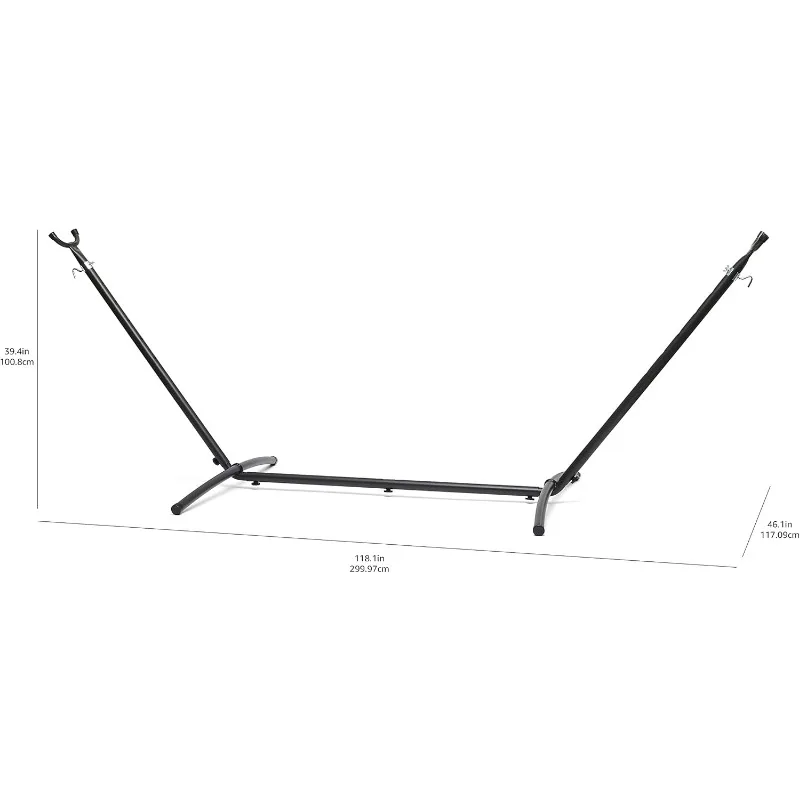
4. Technical Setup for Optimal Comfort: The Science of the Perfect Hang
The difference between an uncomfortable hammock experience and blissful relaxation often comes down to technical setup details. Understanding and implementing these principles will dramatically improve your comfort.
Suspension Height and Angle
The foundation of a proper hammock setup includes:
- Optimal starting height: Begin with your suspension points at approximately 4-6 feet (1.2-1.8 meters) above ground level, adjusting based on your specific hammock and weight.
- The critical 30-degree angle: When your hammock is properly weighted, the suspension straps should form roughly a 30-degree angle with the horizontal. This angle represents the ideal balance between tension, sag, and lateral forces on your anchor points.
- Measuring the angle: If you’re not confident eyeballing 30 degrees, use your hand to form a peace sign—the angle between your fingers is approximately 30 degrees, providing a convenient field reference.
Creating the Perfect Sag
Contrary to what many beginners assume, a tight, straight hammock is extremely uncomfortable:
- Embrace the curve: Your unoccupied hammock should have a noticeable curve or sag—this allows for the diagonal lay that creates a flat resting position.
- Adjustable suspension: Systems with multiple attachment points or adjustable features make fine-tuning your sag much easier.
- Testing and adjusting: Finding your perfect amount of sag may take experimentation based on your weight, hammock material, and personal preference.
Mastering the Diagonal Lay
The secret technique experienced hammockers use for flat, comfortable positioning:
- Position at an angle: Rather than lying parallel to the hammock’s centerline, position your body at approximately a 30-degree angle across the hammock.
- Head and feet positioning: Your head and feet should be closer to opposite edges while your torso remains centered.
- Weight distribution: This diagonal position distributes your weight to create a surprisingly flat surface without pressure points.
Complete installation requirements and safety protocols should always be followed, especially when setting up for the first time in a new location.
Before fully committing your weight, always test your setup gradually. Apply pressure slowly and listen for any concerning sounds from your anchors or suspension system. This cautious approach can prevent unexpected falls or equipment failure.
For those seeking the ultimate in comfort, exploring additional comfort optimization techniques can elevate your hammocking experience even further.
5. Best Locations for Your Hammock: Environment-Specific Recommendations
Now that you understand the technical aspects of hammock setup, let’s explore the characteristics of ideal locations across different environments.
Home Environments
Your home offers numerous possibilities for creating perfect hammock spaces:
- Backyard and garden placement:
- Consider morning vs. afternoon sun exposure based on your climate
- Evaluate sight lines for privacy from neighbors and roads
- Look for natural focal points like gardens, water features, or scenic views
Plan for seasonal changes in foliage and shade patterns
Patio, deck, and porch setups:
- Ensure structural supports can handle lateral forces
- Consider permanent vs. temporary installations based on weather and usage
- Integrate with existing furniture and traffic patterns
Add weather protection elements for extended seasonal use
Integration with outdoor living:
- Position near outdoor kitchens or entertainment areas for social accessibility
- Create conversation groupings with multiple hammocks for shared enjoyment
- Consider proximity to power for lighting or device charging
Wooden arc stand hammock sets provide elegant, permanent solutions that transform ordinary garden spaces into extraordinary relaxation zones without requiring trees or structural modifications to your home.
Wilderness and Camping Locations
For outdoor adventurers, these considerations ensure a comfortable wilderness hammock experience:
- Campsite selection criteria:
- Look for established sites to minimize environmental impact
- Seek natural windbreaks for protection
Consider morning sun position for natural wake-up warmth
Weather considerations:
- Position your hammock perpendicular to prevailing winds
- Plan for drainage in case of rain (avoid depressions or areas where water collects)
Evaluate seasonal insect patterns when selecting locations
Regulatory awareness:
- Many parks have specific hammock policies—some prohibit tree attachment entirely
- Stay on designated sites or trails to minimize impact
- Research permit requirements for backcountry areas
Urban and Small Space Solutions
Limited space doesn’t mean limited hammocking:
- Balcony setups:
- Verify weight capacities and attachment options
- Consider compact stands specifically designed for confined spaces
Use visual screening for privacy in dense urban environments
Small yard maximization:
- Multi-purpose supports that serve as garden trellises and hammock anchors
- Removable systems that allow space flexibility
Vertical integration with existing landscaping
Indoor placements:
- Position near windows for natural light
- Consider room flow and traffic patterns
- Integrate with existing decor through complementary colors and materials
Scenic Spots for Memorable Experiences
Some locations offer extraordinary hammock experiences worth seeking out:
- Elevated viewpoints:
- Ridgelines and summits (with proper safety precautions)
- Bluffs overlooking water bodies
Forest gaps with canopy views
Waterside relaxation:
- Lake shores with sunset views
- River banks with gentle sound ambiance (maintaining proper distance for environmental protection)
- Ocean beaches with shade options and tide awareness
Exploring various indoor and outdoor hammock locations can inspire you to discover your personal perfect hammock haven.
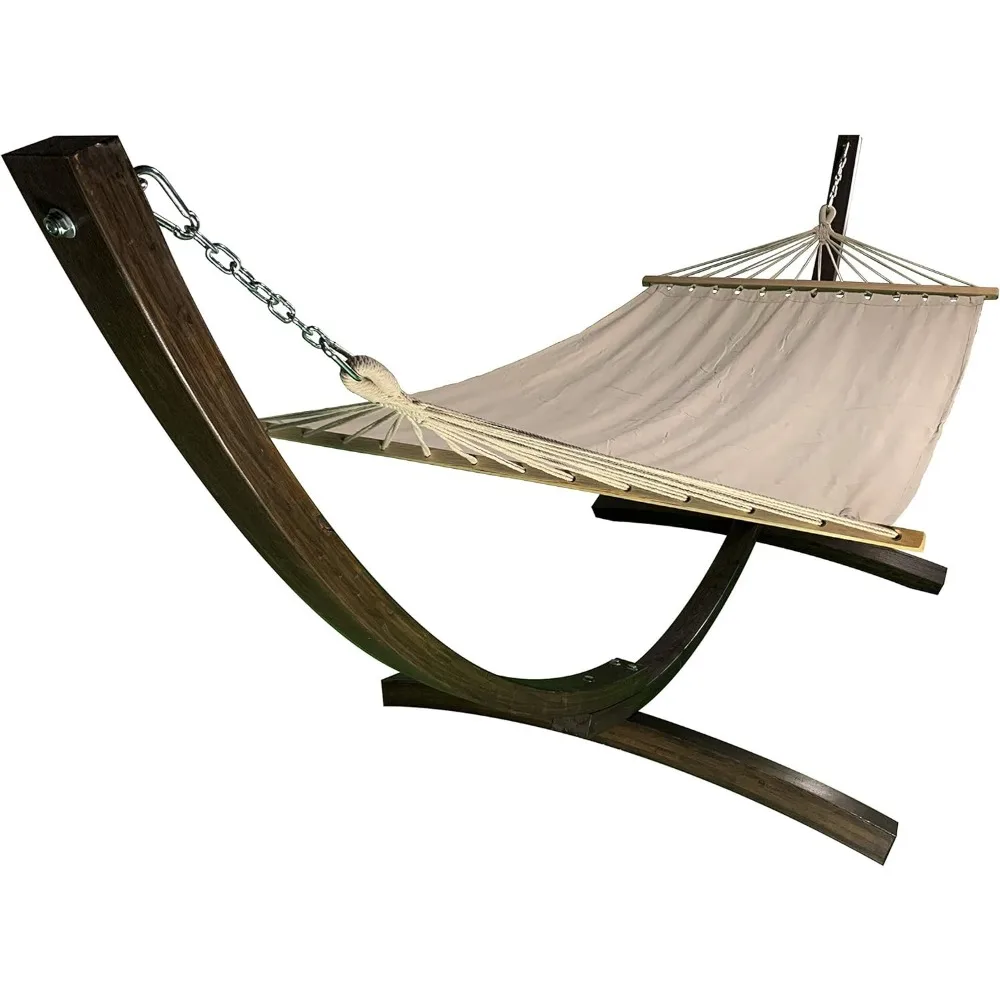
A-Frame Stand Hammock Sets, Swinging Hammock Chair Sets
$154.62 Select options This product has multiple variants. The options may be chosen on the product pageCamping Hammock Sets with Bug Net, Ultralight Camping Hammock Sets
$139.72 Select options This product has multiple variants. The options may be chosen on the product pageClassic Wooden Stand Hammock Sets, Heavy Duty Hammock Sets
$1,061.68 Select options This product has multiple variants. The options may be chosen on the product pageHammock Sets with Canopy, Heavy Duty Hammock Sets
$286.31 Select options This product has multiple variants. The options may be chosen on the product pageDouble / Two Person Hammock Sets, Rope Hammock Sets
Double Traditional Cotton Rope Hammock with Extension Chains – 450 lbs Capacity for Backyard & Patio$292.98 Select options This product has multiple variants. The options may be chosen on the product page
6. Overcoming Common Placement Challenges: Practical Solutions
Even with perfect knowledge of ideal hammock placement, real-world conditions often present challenges. Here are solutions to the most common obstacles hammock enthusiasts encounter.
Insufficient or Unsuitable Anchors
When perfect trees or structural supports aren’t available:
- Portable stand solutions: Portable hammocks and stands offer exceptional flexibility for locations without natural anchors, from beaches to campsites to city parks.
- Permanent post installation: For yard installations, properly set 4×4 or 6×6 posts with concrete footings can create long-lasting hammock supports.
- Temporary anchoring systems: Sand or water-filled anchors provide stability on beaches or other locations where permanent solutions aren’t possible.
Non-Ideal Spacing Between Anchor Points
When anchor points aren’t perfectly spaced:
- For widely spaced anchors: Extended suspension systems with additional webbing or specialized hardware can accommodate distances up to 20 feet (6 meters).
- For closely spaced anchors: Drip lines (creating a V-shape in your suspension) can effectively shorten the functional distance between nearby trees or posts.
- Adjustable suspension systems: Invest in systems with multiple attachment points or adjustable features that allow adaptation to various distances.
Uneven Terrain Challenges
When the perfect spot comes with imperfect ground:
- Height differential adjustment: Hang the hammock head-end higher when on a slope to create a level lying position.
- Ground preparation: For longer stays, consider minimal, low-impact leveling of small areas beneath your hammock for safer entry and exit.
- Support stabilization: On soft or uneven ground, place flat stones under stand feet to prevent sinking and instability.
Weather and Environmental Protection
For extending your hammock season and comfort:
- Rain protection: Position tarps or rain flys with proper drainage angles and sufficient coverage beyond your hammock ends.
- Cold management: Underquilts prevent compressed insulation and cold spots better than sleeping pads in hammocks.
- Insect solutions: Integrated bug nets or separate systems can create pest-free relaxation zones.
- Sun considerations: UV-resistant fabrics and strategic shade positioning extend both your comfort and your hammock’s lifespan.
These practical solutions address most common challenges, but for specific concerns about indoor installations, additional guidance on safely hanging hammocks indoors can provide peace of mind.
7. Hammock Placement for Longevity: Protecting Your Investment
Proper placement doesn’t just affect your immediate comfort—it dramatically impacts how long your hammock will last. Quality hammocks represent a significant investment that deserves protection through thoughtful placement and care.
How Placement Affects Durability
Environmental factors have direct impacts on hammock materials:
- UV exposure: Ultraviolet rays break down fibers over time, particularly in nylon and polyester hammocks. When possible, place your hammock where it receives filtered light rather than constant direct sun.
- Moisture management: Persistent dampness encourages mildew and rot in natural fibers and weakens synthetic materials over time. Choose locations with good airflow and avoid areas where morning dew lingers.
- Environmental contaminants: Tree sap, bird droppings, and other natural elements can stain and degrade hammock fabrics. Consider positioning that minimizes these exposures.
Inspection and Maintenance Practices
Regular monitoring prevents small issues from becoming major problems:
- Anchor point inspection: Check trees, posts, or other supports regularly for signs of stress, movement, or damage.
- Suspension system examination: Look for fraying, discoloration, or deformation in straps, ropes, or hardware.
- Attachment point reinforcement: Pay special attention to areas where fabric meets suspension components, as these typically show wear first.
Takedown and Storage Protocols
Not all hammock placements should be permanent:
- Weather-based removal: Take down hammocks before severe weather events to prevent damage from wind, falling debris, or heavy precipitation.
- Seasonal considerations: In most climates, hammocks should be stored during winter months or extreme weather seasons.
- Proper storage techniques: Always ensure hammocks are completely dry before storing, and store in breathable containers rather than sealed plastic.
For additional guidance on outdoor durability, investigating whether leaving hammocks outside is appropriate for your specific climate and hammock type can save you from premature replacement costs.
8. Enhancing Your Hammock Spot: Accessories and Upgrades
The perfect hammock location can be further elevated with thoughtfully chosen accessories that enhance comfort, extend usability, and complement your aesthetic vision.
Essential Accessories for Placement Flexibility
These core additions expand where and how you can use your hammock:
- Premium suspension systems: Adjustable straps with multiple connection points allow for adaptation to various distances and anchor types.
- Structural ridgelines: These create consistent sag regardless of hang distance, ensuring comfort in different locations.
- Tree-friendly wide straps: Beyond their environmental benefits, wide straps distribute weight more evenly, reducing stress on attachment points and improving safety.
Weather Protection Enhancements
Extend your hammocking season with these protective additions:
- Tarps and rain flys: Available in various shapes and sizes, these provide customizable protection from precipitation and sun.
- Thermal barriers: Underquilts specifically designed for hammocks prevent cold-air circulation beneath you without compressing insulation.
- Wind protection: Shields and partial enclosures can transform a hammock into a true three-season or even four-season shelter.
Comfort Additions
Small touches can significantly enhance relaxation:
- Specialized pillows: Hammock-specific pillows and headrests are designed to work with the natural curve of your setup.
- Storage solutions: Side slings, organizer pockets, and gear hammocks keep essentials accessible without cluttering your relaxation space.
- Entry and exit aids: Stability lines and ladder systems make getting in and out of your hammock more graceful and safe.
Aesthetic Improvements
Transform your hammock spot into a complete outdoor retreat:
- Ambient lighting: Solar string lights, lanterns, or LED systems create magical evening environments.
- Complementary landscaping: Strategic plantings can enhance privacy, provide shade, and create sensory experiences through fragrance and visual beauty.
- Personalized touches: Weather-resistant cushions, side tables, or decorative elements express your style while enhancing functionality.
For hammockers concerned about insects in natural settings, exploring hammock sets with integrated bug protection provides seamless solutions without compromising comfort or aesthetics.
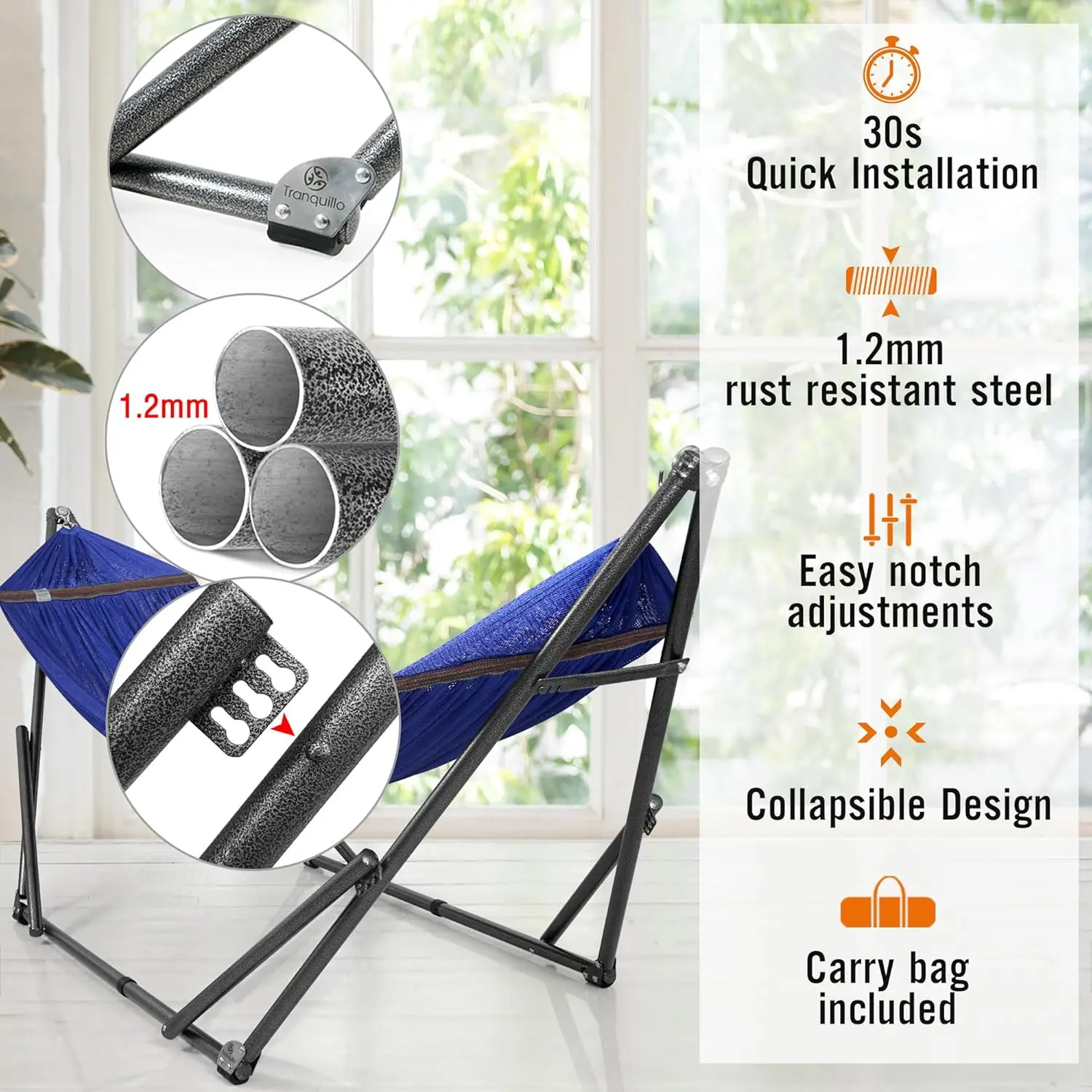
9. Common Hammock Placement Questions: Expert Answers
Can you hang a hammock without trees?
Yes, absolutely! Hammocks can be enjoyed almost anywhere using stands, posts, or structural anchors. Portable stands offer flexibility for treeless environments like beaches or desert landscapes, while permanent posts can create dedicated hammock spaces in yards without suitable trees. Indoor hammocks can utilize wall studs or ceiling joists for secure mounting.
Is it safe to hang a hammock indoors?
Yes, when properly installed into structural elements. The key is ensuring your anchor points connect to wall studs, ceiling joists, or other load-bearing structures—never just drywall or plaster. Indoor hammocks should follow the same safety principles as outdoor setups, including appropriate weight ratings and regular inspection of all components.
What is the ideal hammock hanging height?
The perfect seated height is approximately 18 inches (45 cm) from the ground when the hammock is weighted with your body. This allows easy entry and exit while providing sufficient clearance to prevent ground contact during normal use. Your suspension points will typically be 4-6 feet (1.2-1.8 meters) high to achieve this seated height while maintaining the proper sag.
What are tree-friendly hammock straps?
Tree-friendly straps are wide (at least 0.75-1.5 inches/2-4 cm) webbing straps that distribute pressure across a larger surface area of bark, preventing damage to the tree’s vascular system. These straps contrast with thin ropes or cords that can cut into and damage bark. Quality tree straps also typically feature adjustable connection points for versatile setup options.
Which is better for hammocking: trees or a stand?
Each option has distinct advantages. Trees provide natural aesthetics, are often free to use, and can offer prime locations with scenic views. However, stands provide consistency, require no environmental impact assessment, work in any location regardless of available trees, and often allow for more precise adjustment of height and distance. The best choice depends on your specific needs, location options, and how you plan to use your hammock.
For those interested in creating the ultimate relaxation environment, exploring ideas for creating a perfect hammock haven can provide inspiration beyond basic placement considerations.
Those concerned about weather exposure may find hammock sets with canopies provide integrated solutions for sun and light rain protection while maintaining an elegant aesthetic.
10. Conclusion: Creating Your Personal Hammock Haven
Finding the perfect hammock spot is both a science and an art—combining technical knowledge with personal preference to create your ideal relaxation experience. Throughout this guide, we’ve explored the critical foundations of safety, environmental responsibility, and proper setup technique that form the non-negotiable base of enjoyable hammocking.
Remember that while the technical aspects matter tremendously, the perfect hammock spot is ultimately one that resonates with you personally. Some prefer a social setting where they can converse with family and friends, while others seek solitude and connection with nature. Your perfect spot might showcase a breathtaking view, or it might be nestled in a private garden corner that feels like a secret retreat.
As you experiment with different locations and setups, you’ll develop an intuitive sense for what works best for your body, your hammock style, and your surroundings. Don’t hesitate to make adjustments—even small changes in height, angle, or positioning can dramatically improve comfort.
With the knowledge from this guide and quality equipment from Outside Luxe, you’re well-equipped to transform simple relaxation into an art form. A thoughtfully placed hammock becomes more than just a piece of outdoor furniture—it becomes a personal sanctuary where time slows down and worries fade away with each gentle sway.

